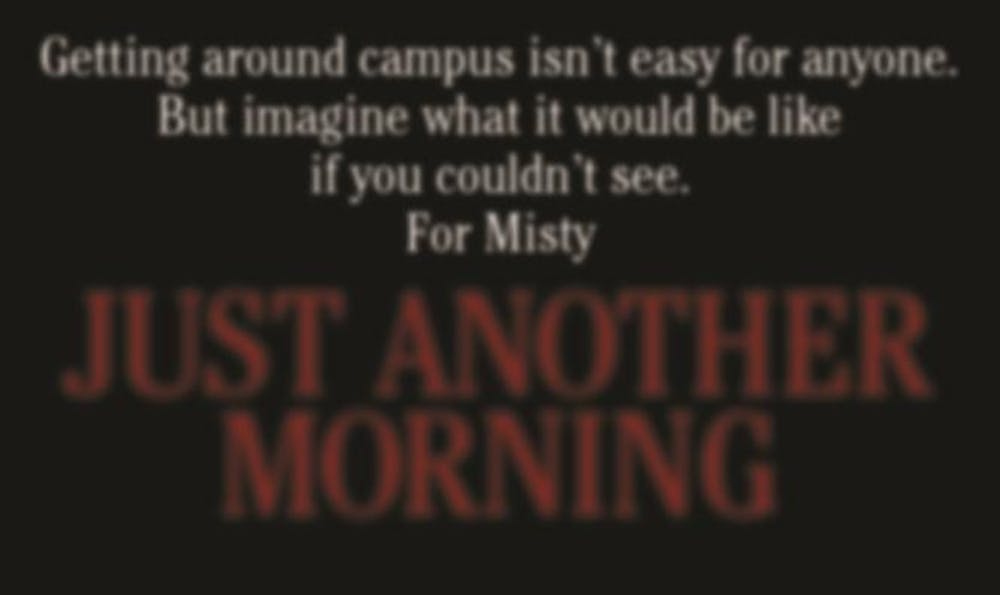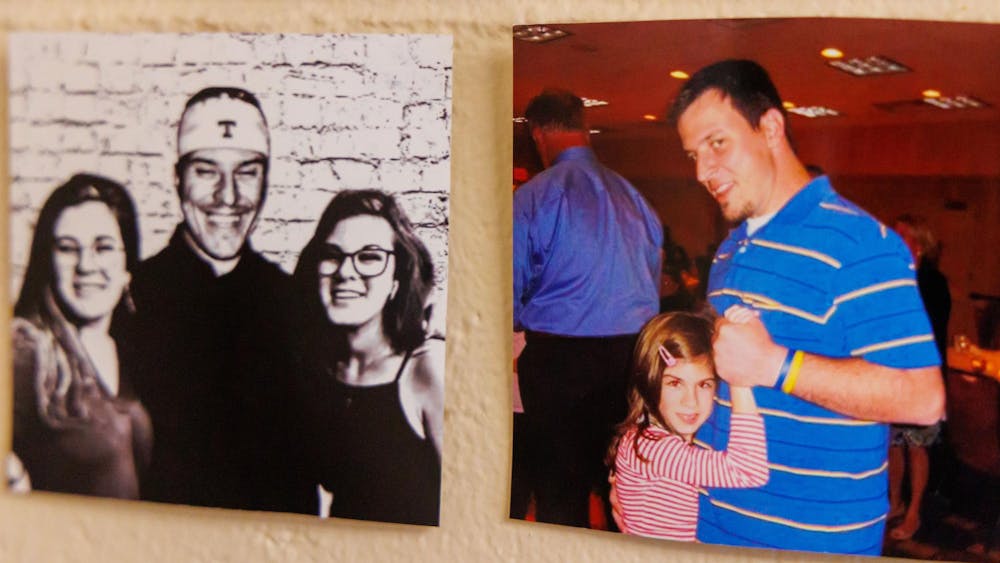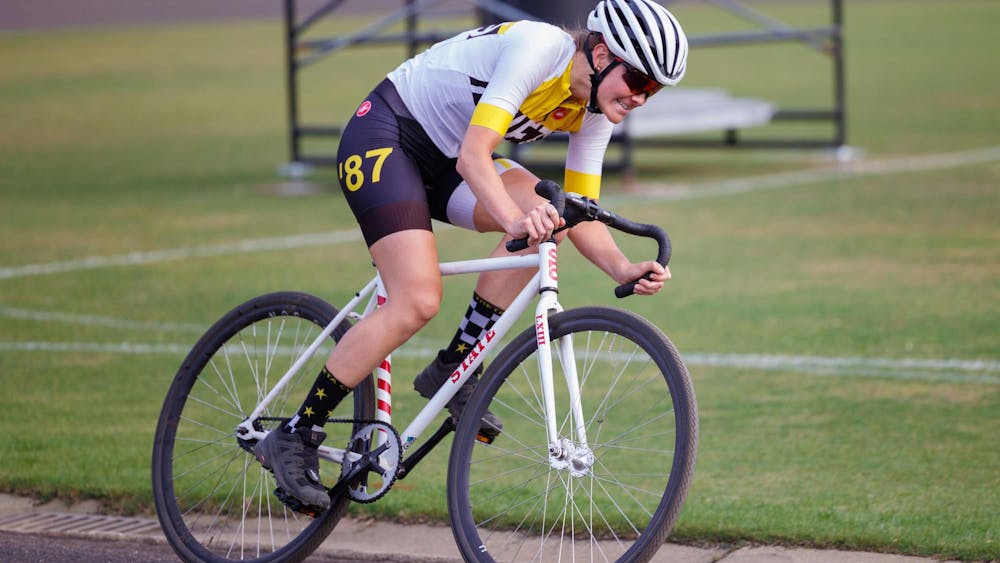"Mason Meth Lab” a computerized voice reports from an iPhone.
It’s a Saturday morning and for 29-year-old master’s student Misty Kienzynski, that voice means she’s on her way to Wright Food Court for a big breakfast.
“It always says that around here,” she says, walking down Union Street toward Seventh. She’s using BlindSquare, a GPS app that uses FourSquare and OpenStreetMaps to find out a user’s surroundings and relay it back to them. Except, it doesn’t always work the way it should.
Her white-tipped cane rattles along the concrete, retracing a semi-circle over and over again in front of her. Born with Leber’s congenital amaurosis, a genetic condition that inhibited her retinal cells from forming properly, Misty is blind — or visually impaired. Or, well, it’s not really about the label, she says. Her vision is 20/200 with glasses and 20/400 without, but it’s more than just a bad prescription, she says. She doesn’t have peripheral vision, and everything she sees is dimmer than what would be considered normal.
“For me, I’ve been used to this all my life,” she says.
At Wright she instinctively reaches for the door handle and makes her way inside and on to the stairs.
It’s 9:30 a.m. on a weekend, so the food court is mostly empty. When it’s crowded she says she walks much slower. “With a cane you can only feel someone’s feet,” she says, which can get hectic when there are crowds of students holding trays sticking out from their upper bodies.
She walks up to the cashier and requests a sighted-guide to help her pick out her food, and another employee arrives to help. Misty takes a step behind the woman and grabs hold of the back of her right elbow, keeping her cane in the other hand.
First, they head to the cereal shelf where the guide reads each cereal’s name aloud. Misty could do it herself, but she can only see about two to three letters at a time while she reads, so she says it’s more efficient to do it this way. She picks the Trix. They move on and the guide helps her order bacon, eggs, and biscuits and gravy at Flamingo’s Grill, fill up a bowl with strawberries, check out with a cashier, and get situated at a table by the window.
Misty navigates her way through her meal using a combination of touch and sight.
“I can tell its bacon because it’s the darkest,” she says. At home she says she tries to put lighter foods on dark plates and darker foods on light plates so there’s a strong contrast. But here it’s tougher to discern where to place her knife and fork to cut her fried eggs on the white plastic plate.
For every plastic utensil she feels the ends to determine which is the knife, the fork, and the spoon. With the Trix, she feels all four corners of the container’s paper lid and pulls back when she finds the correct pullback tab — it’s slightly longer than the rest. Next she opens the milk, but before pouring she sticks her pointer finger directly into the cereal, so she can feel the liquid to prevent any overflows. “Looking normal comes second to doing things efficiently,” she says.
Over the years she’s taught herself little tricks to get around her lack of vision. And though she’s adjusted to her lifestyle, she says living with a visual impairment can create a lot of social barriers.
Often people will unconsciously associate her physical disability with a mental disability, even though this couldn’t be farther from the truth. Misty graduated as valedictorian of her class from the Indiana School for the Blind and Visually Impaired in 2001, and has since gone on to receive her bachelor’s degree in classical studies from the University of Evansville, and is working on her second master’s degree from IU.
“People will talk down to me like I’m two,” she says. “It makes my blood boil. My initial knee-jerk reaction is to be like, ‘Really?’”
When she’s ready to go, she leaves her tray on the table. Another food court employee will pick it up, she says. Her hands are full with her cane in her right hand and an umbrella in the other. Leaving Wright, she steps out into the clear January sun.
“Wow, that’s bright,” she says, shielding her eyes with her hand.
Down Campbell Street, left on Seventh, and a right on Union Street back up to Willkie Quad. It’s a planned route, and she never deviates from the sidewalk. When she first got to campus she used an Orientation and Mobility training guide to help her get used to her new surroundings on campus.
But now, on this morning, like most other Saturdays on campus, it’s just a part of her routine.
Just another morning
Getting around campus isn't easy for anyone. But imagine what it would be like if you couldn't see.

Get stories like this in your inbox
Subscribe





